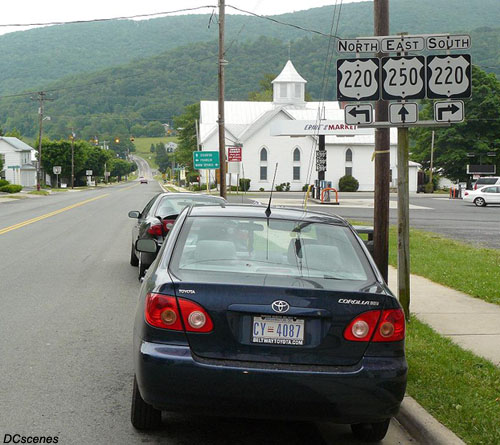2000 Taxation Without Representation Baseplate
Issued Since November 2000
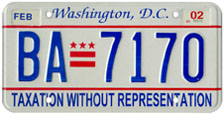
|
|
The earliest style of 2000 baseplate is characterized by an embossed registration number, plate stickers for validation, and the city name in italics. Issued for about one year, from Nov. 2000 through Oct. 2001. Two distinctive italic fonts were used to display the city name. The highest observed plate of this style is number BG-1886.
|
|
Nov. 2000-Oct. 2001
|
|
|

|
Characterized by a flat registration number and the city name in italics. Issued for approximately one year, from Oct. 2001 through Oct. 2002. Validation may be in the form of plate stickers or a windshield sticker. Numbered from about BG-2000 to BP-1399. | |
|
Oct. 2001-Oct. 2002
|
||

|
Characterized by a flat registration number and the city name in block letters. Validation is indicated with a windshield sticker. Includes SEE WINDOW STICKER in each upper corner on stickers or graphically printed. Issued from Oct. 2002 through Aug. 2013 and numbered from BP-1400 to approximately EK-0000. The height of registration number characters was reduced slightly in late 2009.
|
|
|
Oct. 2002-Aug. 2013
|
||
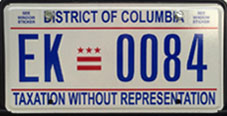
|
DISTRICT OF COLUMBIA replaced WASHINGTON, DC on plates issued for four years. These plates have the shorter registration number characters introduced in late 2009. Issued from late July 2013 through early August 2017, likely beginning at registration number EK-0000 and ending around FN-4000. | |
|
Aug. 2013-Aug. 2017
|
||

|
Jurisdiction name switched back to WASHINGTON, DC on auto plates issued starting in early Aug. 2017, at which time the slogan was modified with the addition of END at the beginning. Registration numbers on this variety begin around FN-4000. | |
|
Since Aug. 2017
|
||
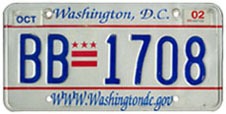
|
|
The first alternative general-issue baseplate, without the TAXATION WITHOUT REPRESENTATION legend, was first observed in early Jan. 2001. The lowest and highest numbers observed in use are BB-0001 and BB-1938, respectively.
|
|
Optional from Jan. 2001-Jan. 2002
|
|
|
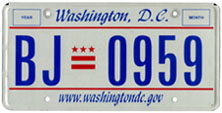
|
Examples of the second alternative general-issue baseplate were first observed in early Jan. 2002, and BJ-series numbers lasted until about July 2010, when the EA series was introduced. The complete BJ series is thought to have been issued, numbered from BJ-0000 through BJ-9999. | |
|
Optional from Jan. 2002-Jul. 2010
|
||
|
Just the Facts...
|
|
|
Construction |
6" x 12", aluminum covered with reflective white sheeting. Issued in pairs. |
|
Design |
Red graphics: two horizontal stripes and the D.C. flag separating letters and numbers. |
|
Period of issuance |
Since November 4, 2000 |
|
Period of use |
Since November 4, 2000 |
|
Other facts
|
|
Taxation plates include no permanent year designation. They are numbered beginning at AZ-0000 (see image below), although BB-, BJ-, and EA-series numbers appear on an alternative general-issue plate that does not have the TAXATION WITHOUT REPRESENTATION legend. Click here to see examples of plates of most two-letter series issued since Nov. 2000 and to learn during which months plates of each two-letter series were distributed. Approximations of registration numbers issued annually are presented below.
The Taxation base was introduced only for new registrations, and although there was no general reissuance with this base, motorists were, at least initially, encouraged to purchase them. The following plate stickers were issued to validate 2000 baseplates before the validation of registrations began to be shown with a windshield sticker:
|
Period of Issuance
|
|||
|
Marked
|
Colors
|
one-year reg.
|
two-year reg.
|
|
01
|
yellow on blue
|
11/4-12/31/00
|
n/a
|
|
02
|
red on white
|
during 2001
|
11/4-12/31/00
|
|
03
|
green on white
|
1/2-4/21/02
|
during 2001
|
|
04
|
magenta on white
|
n/a
|
1/2-4/21/02
|
The dated \'04 sticker was the last D.C. plate sticker issued for general-issue passenger car registrations, at least for the foreseeable future. They were issued only during the first 111 days of 2002 to motorists that purchased a new registration and chose the optional two-year registration period. Images of later stickers, issued mostly for use on plates of certain non-passenger types, may be seen in our sticker gallery.
Registration Numbers Since Nov. 2000
Our assumptions as to general-issue passenger car registration numbers assigned on this base through the end of last year, assuming a one-year registration term, are presented in this table. We estimate that during this period of 15 years and two months, 868,100 pairs of general-issue auto plates with the TAXATION slogan have been assigned, at an average rate of about 4,770 per month or 221 per business day. This table does not include the 1,250 low-number registrations assigned annually throughout this period and the approximately 15,000 non-TAXATION auto plates issued since early 2001.
|
Period of Issuance |
Estimate of
Numbers Assigned |
Letter Series
Not Issued |
Quantity of Estimated |
|
Nov. 4-Dec. 31, 2000
|
AZ-0000 to AZ-5699
|
|
5,700
|
|
2001
|
AZ-5700 to BH-2699
|
BB
|
67,000
|
|
2002
|
BH-2700 to BR-3099
|
BI, BJ, BO, BQ
|
60,400
|
|
2003
|
BR-3100 to BX-0999
|
|
57,900
|
|
2004
|
BX-1000 to CC-9999
|
|
59,000
|
|
2005
|
CD-0000 to CK-0099
|
CI
|
60,100
|
|
2006
|
CK-0100 to CS-9999
|
CL, CO, CQ
|
59,900
|
|
2007
|
CT-0000 to CY-9999
|
|
60,000
|
|
2008
|
CZ-0000 to DE-7499
|
DC
|
47,500
|
|
2009
|
DE-7500 to DK-4799
|
DI
|
47,300
|
|
2010
|
DK-4800 to DR-8599
|
DO, DQ
|
53,800
|
|
2011
|
DR-8600 to DY-9199
|
DV, DW
|
50,600
|
|
2012
|
DY-9200 to EF-8999
|
EA
|
49,800
|
|
2013
|
EF-9000 to EM-5499
|
EI
|
56,500
|
|
2014
|
EM-5500 to EU-9799
|
EO, EQ
|
64,300
|
|
2015
|
EU-9800 to FB-8099
|
|
68,300
|
|
2016
|
FB-8100 to FJ-9999
|
FI
|
71,900
|
|
2017
|
FK-0000 to FS-0999
|
FO, FQ
|
61,000
|
|
2018
|
FS-1000 to FZ-2999
|
FU | 62,000 |
| 2019 | FZ-3000 to GF-1999 | 59,000 | |
| 2020 | GF-2000 to GJ-2999 | 41,000 | |
| 2021 | GJ-3000 to GT-4999 | GO, GQ | 82,000 |
|
2022
|
GT-5000 to GV-9999
JA-0000 to JC-8999
|
GW to IZ | 54,000 |
| 2023 | JC-9000 to JH-7699 | 48,700 | |
| 2024 | beginning at JH-7700 |
The Taxation Without Representation Slogan
Why This Slogan?
In very basic terms, the reason for this unusual slogan is that most residents of the District of Columbia want something that they don\\'t have: voting representation in Congress. District residents pay federal taxes, serve in the military, and enjoy all of the rights and privileges that come with U.S. citizenship except having a voice in Congress. The District is represented in the House of Representatives by Eleanor Holmes Norton, an elected delegate who may vote in committee but has no vote on the floor of the House. There is no District representation in the Senate. The disenfranchisement of D.C. voters has not always been limited to a lack of representation in Congress: they were unable to cast ballots for president of the United States until the 1964 election!
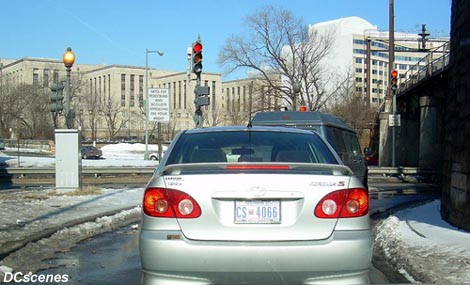 The history of Washington, D.C. is an interesting one, but a detailed discussion is beyond the scope of this article. The city of Washington was incorporated in 1791, hence the special graphic 1991 City Bicentennial license plates. The Federal District, which came to be called the District of Columbia, was formed in December 1800 from the cities of Georgetown, Maryland; Alexandria, Virginia; and Washington. (We were unable to determine whether Washington, the site of which was chosen by Pres. George Washington, was considered part of the state of Maryland between 1791 and 1800.) The seat of government was transferred from Philadelphia to Washington on December 1, 1800, and John Adams, our second president, was the first to serve in an official capacity in that city. The Virginia portion of the District was retroceded to that state in 1846. In the late 19th century the city charter of Georgetown, Maryland, was revoked and that city and Washington were combined.
The history of Washington, D.C. is an interesting one, but a detailed discussion is beyond the scope of this article. The city of Washington was incorporated in 1791, hence the special graphic 1991 City Bicentennial license plates. The Federal District, which came to be called the District of Columbia, was formed in December 1800 from the cities of Georgetown, Maryland; Alexandria, Virginia; and Washington. (We were unable to determine whether Washington, the site of which was chosen by Pres. George Washington, was considered part of the state of Maryland between 1791 and 1800.) The seat of government was transferred from Philadelphia to Washington on December 1, 1800, and John Adams, our second president, was the first to serve in an official capacity in that city. The Virginia portion of the District was retroceded to that state in 1846. In the late 19th century the city charter of Georgetown, Maryland, was revoked and that city and Washington were combined.
The series of events that has led to District residents not having representation in Congress is a long and somewhat complicated one that will not be outlined here. However, this information is available in varying levels of detail in a wide variety of printed and electronic mediums.
Where Does Taxation Without Representation Come From?
"Taxation without representation is tyranny." So said James Otis, often referred to as America\'s first Patriot, in his 1764 pamphlet The Rights of the British Colonies asserted and proved. In another passage from the document, in which he spoke adamantly on the issue of taxation and representation, Otis writes "The very act of taxing, exercised over those who are not represented, appears to me to be depriving them of one of their most essential rights; and, if continued seems to be, in effect, an entire disfranchisement of every civil right." A prolific writer on issues of the colonies and independence, the Massachusetts lawyer, orator, pamphleteer, and public servant voiced his opposition, with fellow legislative leaders Samuel Adams and Joseph Hawley, to many Revenue Acts of the crown. In a criticism of the Sugar Act, he wrote "no parts of his Majesty\\'s domain can be taxed without their consent." In a letter to the Lower House of Parliament, also of 1764, he wrote "If we are not represented, we are slaves."
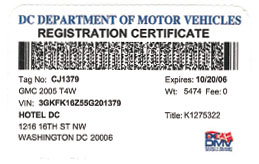 Historians have referred to two of Otis\'s maxims, that which leads the previous paragraph and "that expenditures of public money without appropriations by the representatives of the people, were arbitrary, and therefore unconstitutional," as laying at the foundation of the Revolutionary War. Of Otis, a critical but often overlooked figure in the fight for our nation\'s independence, John Adams said he had "a prophetic glance of his eyes into futurity." Otis even referred to "My country" when speaking of the colonies, the first instance of anyone conceiving of a nation separate and independent from the crown. Had he not been killed by a bolt of lightning on a farm in Andover, Mass., in 1783, his signature would likely appear on the Declaration of Independence.
Historians have referred to two of Otis\'s maxims, that which leads the previous paragraph and "that expenditures of public money without appropriations by the representatives of the people, were arbitrary, and therefore unconstitutional," as laying at the foundation of the Revolutionary War. Of Otis, a critical but often overlooked figure in the fight for our nation\'s independence, John Adams said he had "a prophetic glance of his eyes into futurity." Otis even referred to "My country" when speaking of the colonies, the first instance of anyone conceiving of a nation separate and independent from the crown. Had he not been killed by a bolt of lightning on a farm in Andover, Mass., in 1783, his signature would likely appear on the Declaration of Independence.
So we see that although inclusion of Taxation Without Representation on a license plate is a novel idea, it is far from being a new premise or way of stating the same. Just as our forefathers fought for independence and representation more than 200 years ago, so too are residents of the nation\'s capital fighting for representation today.
So How Did This Slogan Wind Up On D.C. Plates?
It\\'s an interesting story and a wonderful example of citizen empowerment. But first, a quick review of how laws are enacted in the District is in order. The Council of the District of Columbia is the legislative body of the nation\\'s capital. A Bill becomes an Act after being passed by the 13-member council. An act becomes law after a mandated period of review (30 legislative days for changes proposed to codes other than the criminal code) by the U.S. Congress. If Congress disapproves of any Act, it adopts a joint resolution of disapproval that must be signed by the president.
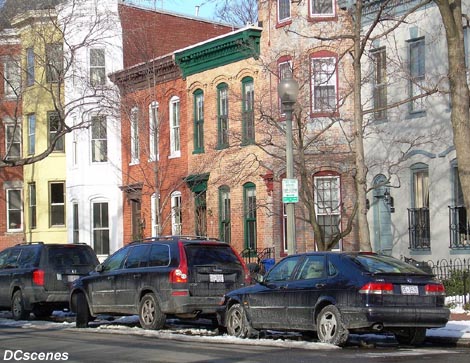 In addition to the creation of laws the Council also expresses its will through resolutions, which do not become permanent law. For example, ceremonial resolutions are passed to honor individuals and organizations for their contributions to the community. There are other types of resolutions, as well. Unlike bills, resolutions do not require the mayor\\\'s signature or a Congressional review. Although proposed resolutions are treated like bills, only a single vote of the Council is required for them to take effect immediately.
In addition to the creation of laws the Council also expresses its will through resolutions, which do not become permanent law. For example, ceremonial resolutions are passed to honor individuals and organizations for their contributions to the community. There are other types of resolutions, as well. Unlike bills, resolutions do not require the mayor\\\'s signature or a Congressional review. Although proposed resolutions are treated like bills, only a single vote of the Council is required for them to take effect immediately.
The story of Taxation license plates begins in March 2000 when Sarah Shapiro, a resident of the city\\'s Foggy Bottom neighborhood, sent an e-mail message to a local radio show, "The D.C. Politics Hour," to suggest that the legend replace the then current Celebrate & Discover. This quickly led to the License Plate Amendment Act of 2000 (Bill 13-698) being presented to the Council by its chairman, Linda W. Cropp. The bill called for an amendment to the D.C. Revenue Act of 1937 concerning motor vehicles to the effect that "Beginning on April 15, 2001, the identification tag issued pursuant to section 2(c) shall include the motto \'Taxation Without Representation\' instead of the motto \'Celebrate and Discover\'."
Without additional documentation from the Council and a working knowledge of the legislative process in the District, we were unable to ascertain exactly what happened next. However, before long the Council issued a resolution in support of the slogan change. It appears that subsequent to bill 13-698 being submitted, a decision was made that the slogan change could be initiated through a resolution rather than an act. The seven arguments contained in the Sense of the Council in Support of New License Plate Slogan Resolution of 2000 (Public Resolution 13-849) provide an excellent summary of the issue, and are therefore reproduced here in their entirety:
- The District of Columbia is the only national capital amongst the world\\'s representative democracies whose residents are denied voting representation in the national legislature.
- Although the Constitution of the United States (Article I, section 8, clause 17) authorizes the establishment of a national capital district over which "Congress shall have the power to exercise exclusive legislation in all cases whatsoever", nothing in its terms or in the rationale offered for this provision suggests that the right to voting representation in the Congress should be withheld from those citizens who happen to reside within the boundaries of the national capital.
- The core principle of a democracy -- that the government derives its powers from the consent of the governed -- is violated when citizens do not have voting representation in the bodies that make their laws.
- Moreover, the fundamental Constitutional rights of one person-one vote and equal protection under the law are each violated by the District\\\'s lack of voting representation in the House and the lack of any representation in the Senate.
- The denial of Congressional voting representation for District residents is even more heinous when coupled with the fact that Congress chooses to exercise ultimate decision-making over all local legislative and budgetary matters affecting District residents. Thus, District residents are not only locked out of their national legislature but also out of what is in a structural sense their state legislature. This shameful lack of democracy is further compounded by the transfer of certain state-like functions from the District government to the Federal government.
- Because District residents bear all of the burdens of citizenship, including federal taxation in the amount of nearly $2 billion annually -- higher federal taxes than eight other states, and including wartime participation, District residents are entitled to full representation in Congress, the same as all other U.S. citizens.
- Taxation without representation led the American colonies in 1776 to declare their independence from Britain. This lofty principle on which our nation was founded requires that District of Columbia residents in the year 2000 no longer be treated-as second-class citizens.
Washington mayor Anthony A. Williams publicly endorsed the Council\'s position on May 5, 2000. On June 12 he testified before the Council\'s Committee on Public Works and the Environment: "I wholeheartedly support this project because it honors the most patriotic and democratic principles of our nation. By putting \'Taxation Without Representation\' on our license plates, we stand up for our rights in a very public way, and send a strong message about our commitment to bringing full democracy to our Nation\'s Capital." "Our Taxation Without Representation License Plate Project is a simple yet crucial step in our march toward achieving the democracy that we Americans hold dear. By making this statement on the standard license plate for the District, we send a clear message to our leadership in the Capitol and our fellow Americans across the country that the District of Columbia deserves the same representation afforded to America\'s other 50 states."
|
The First TAXATION WITHOUT REPRESENTATION Plate
|
|
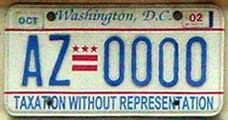
|
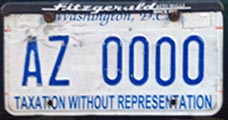
|
|
in 2002
|
in 2015
|
Here Come The Plates!
It wasn\\'t long before the District\\'s new license plates were ready for issuance. In a widely publicized event, the DMV curtailed most of the services it customarily offers at its headquarters on Saturday and concentrated on issuing plates with the new slogan. 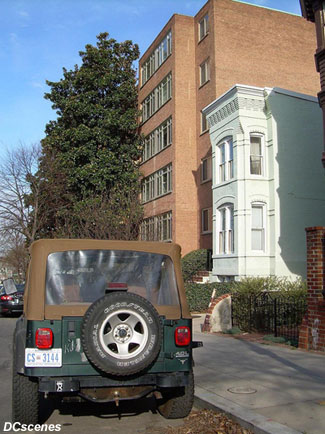 The first motorist in line on Nov. 4, who presumably received plate no. AZ-0000 (pictured) unless it had been specially assigned prior to that day, reserved his place at the front of the line at 3:30 a.m., and others arrived within three hours in anticipation of the 9:00 a.m. opening. In its newsletter, under the headline Celebrate and Discover the new "Taxation Without Representation" License Plate , the DC Vote organization invited all supporters of the cause to gather at the C Street, N.W. office for an "early morning rally and celebration" of the new plates, and to exchange their old ones. Mayor Anthony A. Williams had declared the day "Driving Toward Democracy Day in the District of Columbia." In his speech, he declared that the $10 plate replacement fee could not "buy a CD or a tank of gas, but it can make an impact on the nation and this city we love." Joining him with prepared comments at the podium were Congresswoman Eleanor Holmes Norton, members of the D.C. Council, and representatives of DC Vote. All of these VIPs were to begin the ceremonies by using screwdrivers specially decorated with red-and-white bows in the colors of the District\\'s flag to change their own plates. "Taxation without representation was tyranny hundreds of years ago, and it is tyranny today," said Joseph Sternlieb, president of DC Vote. "The new license plates bring the message of our second-class status to the world and move us one step closer to our goal of full representation in Congress," he added. Live music was featured and snacks provided, and among the first to receive new plates was Sarah Shapiro, who first suggested that the slogan be changed. Her personalized plates read MY IDEA. Conflicting reports put the number of motorists that purchased Taxation plates that first day at 300, 700, and 870. The lower number, provided by CNN the day after the event, initially seemed like the most accurate tally, but the 870 figure was reported in the newsletter of DC Vote in December 2000, and one would assume that by this time an accurate figure could have been calculated.
The first motorist in line on Nov. 4, who presumably received plate no. AZ-0000 (pictured) unless it had been specially assigned prior to that day, reserved his place at the front of the line at 3:30 a.m., and others arrived within three hours in anticipation of the 9:00 a.m. opening. In its newsletter, under the headline Celebrate and Discover the new "Taxation Without Representation" License Plate , the DC Vote organization invited all supporters of the cause to gather at the C Street, N.W. office for an "early morning rally and celebration" of the new plates, and to exchange their old ones. Mayor Anthony A. Williams had declared the day "Driving Toward Democracy Day in the District of Columbia." In his speech, he declared that the $10 plate replacement fee could not "buy a CD or a tank of gas, but it can make an impact on the nation and this city we love." Joining him with prepared comments at the podium were Congresswoman Eleanor Holmes Norton, members of the D.C. Council, and representatives of DC Vote. All of these VIPs were to begin the ceremonies by using screwdrivers specially decorated with red-and-white bows in the colors of the District\\'s flag to change their own plates. "Taxation without representation was tyranny hundreds of years ago, and it is tyranny today," said Joseph Sternlieb, president of DC Vote. "The new license plates bring the message of our second-class status to the world and move us one step closer to our goal of full representation in Congress," he added. Live music was featured and snacks provided, and among the first to receive new plates was Sarah Shapiro, who first suggested that the slogan be changed. Her personalized plates read MY IDEA. Conflicting reports put the number of motorists that purchased Taxation plates that first day at 300, 700, and 870. The lower number, provided by CNN the day after the event, initially seemed like the most accurate tally, but the 870 figure was reported in the newsletter of DC Vote in December 2000, and one would assume that by this time an accurate figure could have been calculated.
On its Web site, the DMV "encourages all DC residents to support DC\\'s quest for full representation in the US Congress by purchasing and displaying Taxation without Representation license plates." The plates were issued to motorists that purchased a new registration beginning on Monday, November 6, 2000. It is believed that new registrations were not issued on Saturday, November 4.
The slogan was modified in mid-2017 with the addition of END to the beginning, so as to read END TAXATION WITHOUT REPRESENTATION. Information about this change is provided below.
The Optional WWW.Washingtondc.gov Legend
No official information about the availability of D.C. license plates without the Taxation Without Representation legend has been found, and optional license plates with WWW.Washingtondc.gov (later changed slightly to www.washingtondc.gov ) appeared without fanfare in January 2001. These plates are issued upon request (but motorists may have to ask two or three times) at no additional cost. Only a small number of them have been issued, and their availability is apparently not widely known and not evident at DMV offices. Of the Web site address plates, one D.C. plate collector writes that "You literally had to \'throw a tantrum\' on the crowded floor of the D.C. DMV in order to get one. Can you imagine?"
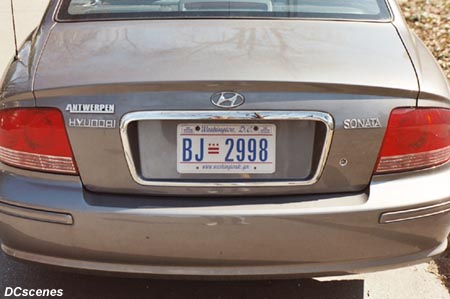 The first series of plates with the Web site address is the BB series of embossed plates; the second series is the BJ series of flat plates; and the third series is EA, also flat. It is believed that 2000 BB-series plates were made, and it took about two years for them to be issued. When more Web site plates were needed the BJ series was introduced, and they lasted through mid-2010, when the EA series was introduced (while plates with the TAXATION slogan were being issued in the DN series) in, we believe, mid-to-late July. Comparative close-up photos of the URL on BB- and BJ-series plates, as well as images of additional plates of these series, appear on our Optional Plates page.
The first series of plates with the Web site address is the BB series of embossed plates; the second series is the BJ series of flat plates; and the third series is EA, also flat. It is believed that 2000 BB-series plates were made, and it took about two years for them to be issued. When more Web site plates were needed the BJ series was introduced, and they lasted through mid-2010, when the EA series was introduced (while plates with the TAXATION slogan were being issued in the DN series) in, we believe, mid-to-late July. Comparative close-up photos of the URL on BB- and BJ-series plates, as well as images of additional plates of these series, appear on our Optional Plates page.
In December 2000, shortly after the Taxation slogan was introduced and widely publicized, it was announced that President Clinton had directed that a set be affixed to the presidential limousine. The democrat\\\'s order, one of his last as president, was widely applauded in the heavily-democratic District of Columbia. "This is a symbolic and important step," said the president of his use of the new plates. "I support the residents of the District of Columbia in the pursuit of full voting representation in Congress," he added.
To nobody\'s surprise, however, Clinton\'s January 2001 replacement in the White House, republican George Bush, was far less enamored with the new slogan. Granting the District representation in Congress would likely shift the balance of power away from the republican party, so it was not unexpected that one of the new president\'s first orders was that all of the Taxation plates be removed from official vehicles. This is believed to be the reason for the creation of auto license plates with an alternative legend, the district government\\'s Web site address.
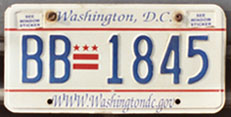
|
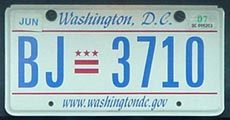
|
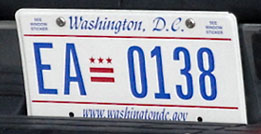
|
| Examples of the three series of alternative general-issue auto plates with the city government Web site address issued since January 2001. | ||
The actual introduction date of the BB-series Web site plate is uncertain. However, one observer spotted number BB-0007 with JAN 02 stickers. If this, the eighth plate of the series (because each two-letter series of D.C. plates customarily begins at number 0000) was issued during January 2001 (which the JAN 02 stickers indicate), then it is a relatively safe assumption that the series was introduced during that month.
At least when they were introduced, Web site address plates were most often seen on high-end vehicles, as well as "big black SUVs that are obviously White House and Secret Service vehicles," writes one D.C. plate collector, who also observed a few on D.C. Police Vehicles. They are, however, also occasionally spotted on average private cars and small trucks. We can tell that the example pictured here was used on a federal government vehicle by the continued use of plate stickers long after the validation of private car registrations began to be indicated with windshield stickers. When photographed, plate BJ-3710 had been revalidated through June 2007.
Plates of the EA series are unusual because they retain the italic font for the city name that otherwise was abandoned on auto plates in late Sept. or early Oct. 2002. Number EA-0138, pictured above, was photographed on Nov. 24, 2010.
From Embossed Plates to Flat Plates
 Until 2001, D.C. license plates had been made at the Lorton Correctional Complex, in suburban Fairfax County, Virginia, for decades. Operated by the District of Columbia Department of Corrections, the old, overcrowded complex was required to be closed by the end of 2001 in accordance with the District\\'s Balanced Budget Act of 1997. Without a facility to manufacture license plates, a contract was reportedly executed with 3M under which that company\\\'s relatively new digital plate technology would be used.
Until 2001, D.C. license plates had been made at the Lorton Correctional Complex, in suburban Fairfax County, Virginia, for decades. Operated by the District of Columbia Department of Corrections, the old, overcrowded complex was required to be closed by the end of 2001 in accordance with the District\\'s Balanced Budget Act of 1997. Without a facility to manufacture license plates, a contract was reportedly executed with 3M under which that company\\\'s relatively new digital plate technology would be used.
The first flat plates were issued in October 2001. The font initially used for Washington, D.C. on the new plates is the same as had been used on Celebrate & Discover plates issued through the end of that series (when the Taxation slogan was introduced), but it was later changed slightly, then completely, as discussed below.
No official information about the change to flat plates in D.C. has been found. However, the following data about the change from embossed to flat U.S. Government plates is included in this discussion because government plates were made at the same Lorton facility where D.C. plates were produced.
According to the General Services Administration (GSA), license plates were made for the federal government at Lorton from 1933 through 2001. (The appearance of D.C. plates is consistent from 1928 through 1934, so it is reasonable to assume that they were produced at the same facility, but their source is not known. D.C. plates for 1935, however, are distinctly different than older plates, and therefore it is likely, based upon the GSA\\\'s representation about government plates, that they were first ones made at Lorton.) According to an October 2001 GSA bulletin, Lorton "stopped taking license plate orders on June 30, 2001." The new supplier for government plates would be Federal Prison Industries, Inc. (UNICOR), and plate orders were to have been taken beginning July 1, 2001. The GSA memo states that "Actual production of license plates at the UNICOR facility will begin on or about September 15, 2001."
Whether UNICOR is also producing the current, flat D.C. plates is unknown, but it seems reasonable to assume that it is. Flat D.C. plates were first seen in use during October 2001, which is reasonable if they were produced by UNICOR and if UNICOR did indeed begin producing flat plates during the previous month.
From Plate Stickers to Windshield Stickers
The April 2002 change from issuing plate stickers to a single windshield sticker for each vehicle (except motorcycles) came as no surprise to individuals familiar with the problem of plate and inspection sticker theft in the District. Misuse of temporary plates, both authentic and counterfeit, was also a chronic problem. In an August 1998 Washington Post article, DMV officials were said to be considering this change in order to reduce instances of unregistered vehicles being used. At the time, when about 246,000 cars were registered, an estimated 500 plate stickers were being stolen from vehicles every month.
Motorists that had expired stickers on their plates when the change was made were provided with reflective blue-on-white stickers bearing the legend SEE WINDOW STICKER to cover them. (Click here to see an example.) These stickers were apparently not available in April 2002 because included in a list of future initiatives in a June 10 DMV news release is "See Window Stickers," with a target date of July 1. By autumn plates were being issued with SEE WINDOW STICKER printed directly on them in the upper corners, where stickers used to appear.
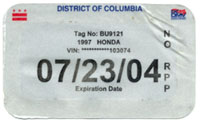 Windshield stickers used to indicate the validity of D.C. vehicle registrations are 5" wide and 3" high. They are displayed in the lower left corner of the windshield, and also serve as a residential parking permit, with a large number in the upper right corner to indicate the zone of the District in which the vehicle is authorized to be parked or "NO PRP" if the vehicle owner has off-street parking. A separate vehicle safety and emissions test sticker is placed in the lower right corner of the windshield. (Click here to see examples of both; click on image at left to see enlarged view and image of sticker application instructions.)
Windshield stickers used to indicate the validity of D.C. vehicle registrations are 5" wide and 3" high. They are displayed in the lower left corner of the windshield, and also serve as a residential parking permit, with a large number in the upper right corner to indicate the zone of the District in which the vehicle is authorized to be parked or "NO PRP" if the vehicle owner has off-street parking. A separate vehicle safety and emissions test sticker is placed in the lower right corner of the windshield. (Click here to see examples of both; click on image at left to see enlarged view and image of sticker application instructions.)
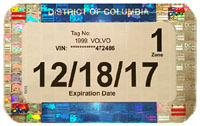 There has been only a single design of the registration sticker but three distinct variants have been used. All three feature the expiration date in large black numbers across the center and DISTRICT OF COLUMBIA at the top. Some early stickers also have TAXATION WITHOUT REPRESENTATION across the bottom. The plate number, year and make of the vehicle, and vehicle identification number are printed in small characters on three lines immediately above the expiration date. The second style (not pictured) is identical to the first, printed on plain white paper, except that there are blue panels at the top and bottom. The current design, introduced in the summer of 2015, has the same composition as the second style but the wide border is covered with reflective prism sheet that mostly appears white but which shows colors when viewed at an angle and in certain lighting conditions, presumably to deter counterfeiting.
There has been only a single design of the registration sticker but three distinct variants have been used. All three feature the expiration date in large black numbers across the center and DISTRICT OF COLUMBIA at the top. Some early stickers also have TAXATION WITHOUT REPRESENTATION across the bottom. The plate number, year and make of the vehicle, and vehicle identification number are printed in small characters on three lines immediately above the expiration date. The second style (not pictured) is identical to the first, printed on plain white paper, except that there are blue panels at the top and bottom. The current design, introduced in the summer of 2015, has the same composition as the second style but the wide border is covered with reflective prism sheet that mostly appears white but which shows colors when viewed at an angle and in certain lighting conditions, presumably to deter counterfeiting.
D.C. windshield stickers are generated by the DMV\'s computer system, DESTINY, which was introduced during 2002. The previous system, Motor Vehicle Information System, had been in use for 30 years according to a June 2002 DMV news release, and was described as being "inefficient and antiquated" by the time it was replaced. The DESTINY system provides far more features than the system it replaced and has reportedly enhanced the DMV\'s customer service capabilities.
From Washington D.C. to the District of Columbia and Back Again
Font Varieties of Washington, D.C.
Three variations in the italic font in which the city\'s name is displayed on 2000 baseplates have been identified. In the composite photo below, example A is that which appeared on the first examples of this base. Examples B and C were probably intended to be identical but they exhibit slight variations probably attributable to manufacturing varieties: example B is from a plate made with traditional graphic sheeting whereas C is a digital (i.e. completely flat) plate.
No specific information is known about why the city name was displayed in a sans serif font beginning at plate no. BP-1400, issued in late Sept. or early Oct. 2002. It resulted in the District\\'s name being more prominent, and this is probably the sole reason.
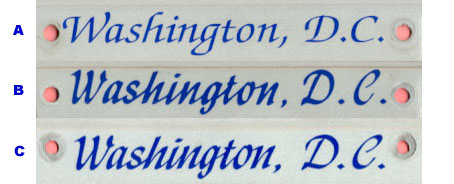
Washington, D.C. Becomes the District of Columbia
An order published by Mayor Vincent Gray on Feb. 22, 2013, called for the city name as it appears on license plates to be changed to DISTRICT OF COLUMBIA according to a Washington Post blog post of that day. “Under the charter that establishes Home Rule in the District we are the District of Columbia, and the plates should match that,” said Pedro Ribeiro, a spokesman for the mayor as the change was announced. “We are realigning ourselves with what is historical precedent.”
The change was implemented gradually as new plates were manufactured. Not surprisingly, the first to feature DISTRICT OF COLUMBIA were plates made on demand. Reserved-number plates issued during March for April issuance reflect the change, and a personalized plate was spotted on April 6 in the new format. All four plates pictured below with DISTRICT OF COLUMBIA feature a different font or size, and it will probably take some time for a uniform presentation to be settled upon.

|
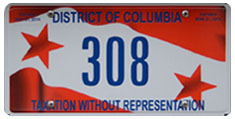
|
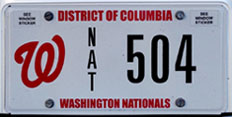
|
|
2012 (exp. 3-31-13) reserved-number plate
|
2013 (exp. 3-31-14) reserved-number plate
|
Washington Nationals optional plate
|

|
|
|
An auto plate issued on or about Aug. 14, 2013
|
A personalized plate observed in use on June 8, 2013
|
The first general-issue passenger car plate with DISTRICT OF COLUMBIA is likely no. EK-0000. Number EJ-9990 has been reported with WASHINGTON, DC whereas EK-0008 has been observed with DISTRICT OF COLUMBIA. Although the issuance date of the first auto plates marked DISTRICT OF COLUMBIA is unknown, the earliest reported sighting of one in use occurred on Sun., July 28. Presented in this table is information about the earliest observations of plates of various types with DISTRICT OF COLUMBIA instead of WASHINGTON, D.C.
|
Plate Type |
Highest Observed
Number with WASHINGTON, D.C. |
DISTRICT OF COLUMBIA
|
||
|
Date of First
Observation |
Lowest
Observed Number |
|||
|
Reserved-Number Pass.
|
n/a
|
Mar. 11, 2013
|
n/a - all 1-1250
|
|
|
Personalized
|
n/a - special order
|
Apr. 6, 2013
|
n/a - special order
|
|
|
Washington Nationals
|
n/a - none issued
|
|
June 8, 2013
|
n/a - all
|
|
General-Issue Pass.
|
EJ-9990
|
Jul. 28, 2013
|
EK-0008
|
|
|
Rental Car
|
R-30982
|
Mar. 17, 2014
|
R-31014
|
|
|
Apportioned
|
AP-0798
|
Mar. 31, 2014
|
AP-1001
|
|
|
Environmental
|
E/N/V 4261
|
May 6, 2014
|
E/N/V 4503
|
|
|
D.C. Government
|
D/C 10451
|
May 10, 2014
|
D/C 10499
|
|
|
Bus
|
B-48851
|
June 30, 2014
|
B-49055
|
|
|
Motorcycle
|
M/R ____
|
Dec. 2, 2014
|
M/R 4824
|
|
|
Trailer
|
T-18952
|
Feb. 24, 2015
|
T-19297
|
|
Switch Back to Washington, D.C.and Slogan Changed to END TAXATION WITHOUT REPRESENTATION
After just four years with DISTRICT OF COLUMBIA, the city name on general-issue auto plates was switched back to WASHINGTON, D.C.
|
Plate Type |
Highest Observed
Number with DISTRICT OF COLUMBIA |
WASHINGTON, D.C.
|
||
|
Date of First
Observation |
Lowest
Observed Number |
|||
|
General-Issue Pass.
|
FN-3473
|
Aug. 14, 2017
|
FN-4076
|
|
|
Rental Car
|
|
Aug. 6, 2017
|
R-358xx
|
|
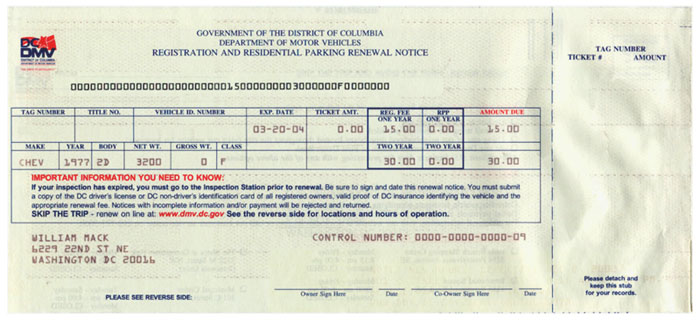
|
|
Several interesting attributes of the D.C. motor vehicle registration system are evident in this early 2004 renewal notice. That this form relates to a Historic Motor Vehicle registration is evident in the annual registration fee, $15. (The fee for regular registrations is $72, $115, or $155 depending on the vehicle\\\'s weight.) Perhaps most relevant is the group of boxes outlined in bold in which renewal fees are provided. This is where motorists are presented with the choice of renewing for a period of one or two years, and also where a fee for participation in the District\\\'s Residential Parking Permit (RPP) program may be provided for. The expiration date of the registration for which this form was prepared is March 20, 2004, so "3/20/04" would have appeared on the window sticker affixed to the vehicle at the time. (Pertinent data such as the plate and title numbers and the registrant\\\'s name and address have been removed or altered so as to not divulge this information.) |
|
|
This page last updated on January 20, 2024 |

|
|
copyright 2006-2024 Eastern Seaboard Press
Information and images on this Web site may not be copied or reproduced in any manner without consent of the owner. For information, send an e-mail to admin@DCplates.net |














